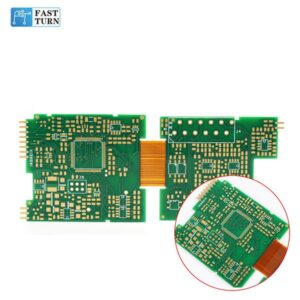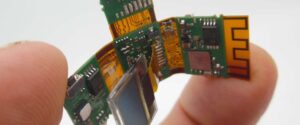Rigid Flex PCB are difficult and costly to manufacture, so if a board needs to be bent, most of the time a hard board with connectors is used to connect to the soft board, but due to the increasing space constraints of electronic products, the connectors are removed to reduce the thickness, and the hard board is directly pressed into the soft board to make a hard and soft PCB.
In 2017, the global market for hard- and soft-compatible boards was approximately $1.66 billion, accounting for only about 2.8% of the overall circuit board, but including smartphones, wireless headsets, drones, automobiles, AR/VR devices, and traditional office machines…the highest growth rate in 2019, and with more applications to follow, it is estimated that hard- and soft-compatible boards are still is the most dynamic product in 2020. The estimated value of the global rigid and flexible PCB market in 2022 is nearly $2.3 billion, accounting for approximately 3.3% of the global PCB output value.
In 2019, mobile device applications are the largest market for hard- and soft-compatible boards, accounting for approximately 43% of the overall hard- and soft-compatible board market, including camera lenses for smartphones, screen signal connections, battery modules…etc. The demand for hard- and soft-compatible boards has increased dramatically, especially in the smartphone camera lens application, as multi-lens phones (front and rear lenses combined) have become more and more popular. The newest addition to the lineup is the newest addition to the lineup.
The development of hard- and soft-compatible boards for cell phone lenses is mainly due to the demand for cell phone lenses, which also need to be developed in the direction of Multi-function, High-density, High Speed/Frequency, etc. Therefore, technologies such as Integration, Fine-line, Low Dk/… are necessary to develop. …are the technologies that need to be developed. In addition, based on many factors such as placement, orientation, signal interference, heat dissipation, and specification, as well as the periscope structure design of some lenses due to optical zoom requirements, there are many different types of CCM systems in terms of appearance, all in response to the increasingly stringent space constraints, and the wiring design of the combined hardware and software board must also be designed to meet the needs of CCM and cell phone motherboard















